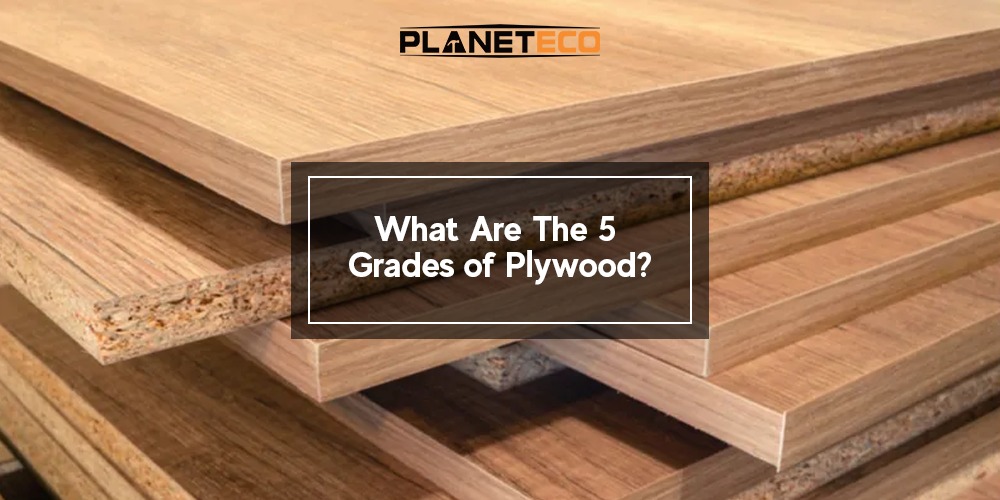You can’t decide which grade or type of plywood will work better for your project. It is impossible unless you don’t know all the available options. These may be light, cheap, durable, weather resistant, and more. Also, remember plywood, which is suitable for outdoor projects, is not always the right choice for indoor projects. However, for boat hull and treehouse projects, you need different plywood.
Plywood is a common material used in different areas. According to a 2016 report, the annual plywood production was almost 683 million cubic feet. The plywood is available in four different grades. These are named A, B, C, and D, with various thicknesses such as ½, ¼, and ¾ inches.
In our blog post, we will explore the five major and popular grades of plywood material that are useful for different construction projects. Also, if you are looking to buy different grades of plywood material, then check out the website of Planet ECO, which provides a range of materials in plywood!
Grades of Plywood Suitable for Various Construction Projects!
Many people ask questions about the grades of plywood material found in the market. That most of them ask what thickness cement board I should use. Well! If you want to know about the cement board and the thickness ranges, then follow the Planet ECO expert’s guide and get to know about the popular options.
Let’s move further to discuss the five popular grades of plywood that are common in the market!
A-grade plywood:
It is high-quality wood, so it is much more expensive. It is because the plywood veneers are flawless and smooth. So it is easy to paint.
B-grade plywood:
It is less smooth than A grade with a solid base. Commonly, it has fewer flaws and can be repaired.
C-grade plywood:
The plywood has knots in the sheets with a thickness of 1.5 inches.
D-grade plywood:
It is the most affordable plywood type with no need of repairing. The wood has large flaws, with the knots having a diameter of 2.5 inches.
Oriented Strand Board:
Another name for this plywood is wafer board, so it is made with wood chips. Due to the patchwork design, the wood contains different sizes, colors, and shapes.
Different Types Of Plywood
CDX:
It is a less costly material with two low grades such as C and D. This type is also resistant to moisture, so it is suitable for work tables and storage units.
Sanded Pine:
It is a versatile plywood with a smooth and clean surface. The wood holds screws and nails tightly, so suitable for boxes and cabinets.
Baltic Birch:
It is a versatile plywood with clean edges and smooth finishing. This is why this type is more costly.
Plywood For Outdoor Uses
Not all plywoods are suitable to resist snow, rain, and weather conditions. But the following types are suitable for outdoor projects:
Pressure-treated plywood:
It is resistant wood to mildew and mold because it is saturated with chemicals. Also, it is durable and lasting wood and doesn’t need coating or paint.
CDX sheathing:
It is less costly wood but never left uncovered. Commonly, this wood has a covering of bricks and shingles.
Some other plywoods are marine-graded plywood. It is lightweight wood made with waterproof glue. Another type is medium-density overlay and southern yellow pine. These are superb for roofs and wall sheathings. Before buying any plywood material, you must tell your requirements for projects to get reliable outcomes!
Which Grade Of Plywood Is Right For My Project?
It is totally based on the project type. For both visible sides of the plywood, you can use A1, A2, B1, and B2. Meanwhile, for front visibility, A4 and B4 are the right choices. You can even ask the team of Planet ECO, who provide the best plywood material in different grades for all kinds of indoor and outdoor construction projects.
For clear finishing, A1 and A2 are the right options. For painted plywood, you can choose grade b is suitable for faces. Meanwhile, for backs, three and low grades are perfect. If you want to use plywood for the deck, roofing, and shed. Then, ensure to find the type that can resist moisture. The plywood with an X at the end is the right option to resist moisture.
Conclusion:
Plywood is the staple engineered wood in home projects. It is because of the high strength and low cost of the wood. So, knowing different grades of plywood lets you make your project successful. There are five popular grades of plywood material available in the market. But finding the one that suits your construction project’s needs well is necessary.
If you are looking to find the best plywood material, then we suggest you check out the latest edition of plywood at the Planet ECO site. Get in touch with the experts now to find out the right fit for all your construction projects!

